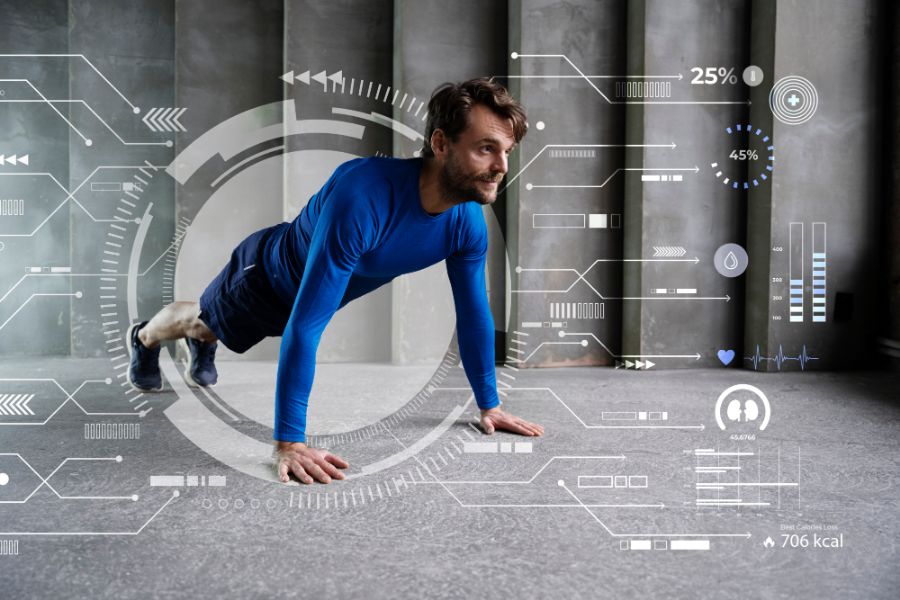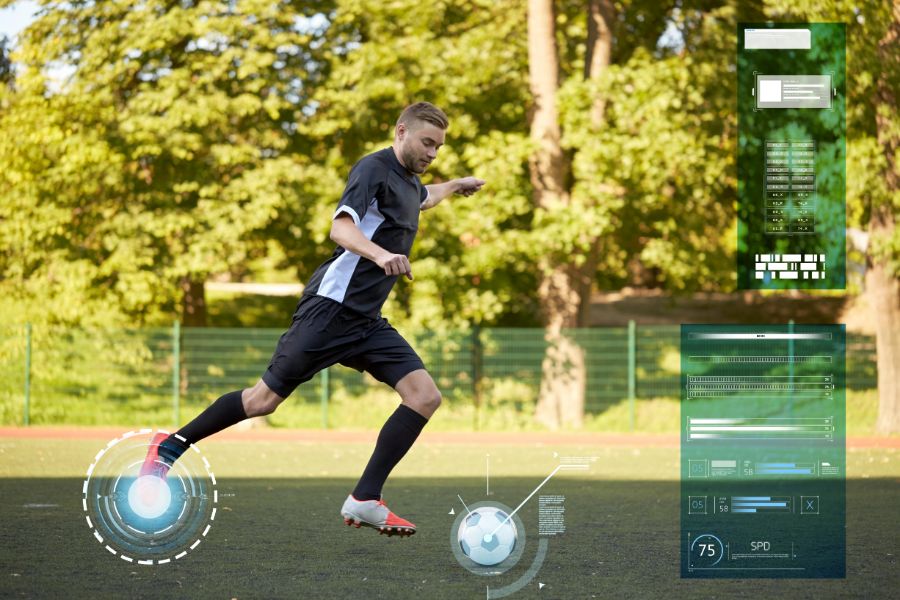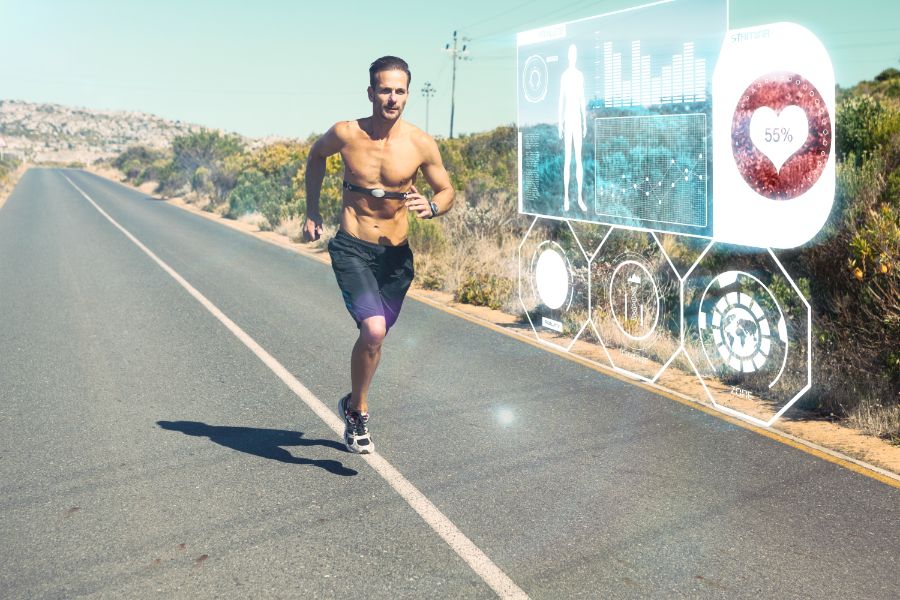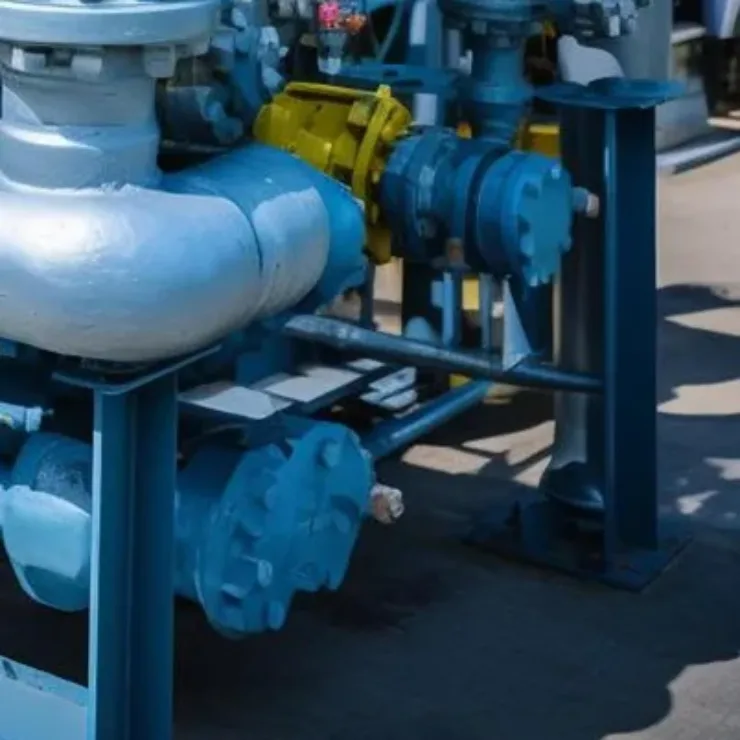Introduction
The Internet of Things (IoT) coupled with wearable technology is now revolutionizing the way sports and health is being monitored. These devices provide complex data acquisition and processing capabilities in the areas of sports performance enhancement, injury prevention, and general health improvement. This article aims at discussing the effects of IoT in sport, the technology used in the development of the wearables, the use of wearables in sports and fitness, examples from Germany, as well as future trends and issues in the field.
Core Technologies to Revolutionizing Sports with IoT
Wearable technology, backed by IoT, has revolutionized sports in a significant manner. Such elements as sensors, wireless communication modules, and data analysis platforms play a crucial role in this process.
Core Technologies:
1.Sensors:
- Accelerometers and Gyroscopes: These sensors detect motion and position, which are essential for calculating things such as speed and acceleration. It is employed in wearables by Bundesliga teams in order to monitor players’ performance during the game.
- Heart Rate Monitors: These sensors work with photoplethysmography (PPG), which means that they measure heart rate by detecting blood flow. This is important for tracking the level of effort and making sure that the players do not exceed certain thresholds.
- GPS Modules: GPS sensors in wearables track athletes’ location, speed, and distance covered. This is particularly useful in sports like football and cycling for detailed performance analysis.
2.Wireless Communication:
- Bluetooth and ANT+: These protocols allow wearables to communicate with other devices so that data can be analyzed in real time. Bluetooth Low Energy (BLE) is particularly used due to its low power consumption for a prolonged period, which is necessary for extended monitoring during extended sports activities.
3.Data Analytics Platforms:
- Cloud Computing: Wearables gather a lot of data, and the analysis is usually done in the cloud to get real-time information. Cloud platforms help in aggregating information from different devices, thus providing a complete picture of performance and well-being.
- Artificial Intelligence (AI) and Machine Learning (ML): AI and ML use data from wearables to spot trends, identify potential damages, and suggest tailored advice. For instance, AI applications could use data to determine a football player’s movement to enhance practice and minimize the risk of injury.
Statistics and Facts:
- Performance Enhancement: According to a study conducted by the German Sports University in Cologne, athletes who use wearable technology to track their activities enhance their performance by 15-20% within a season.
- Injury Reduction: According to FIFA, the use of wearable technology for monitoring helps teams cut their injury rate by up to 30%.
Use Case: IoT Wearable Technology in Bundesliga, Bundesliga clubs such as Bayern Munich and Borussia Dortmund, have employed GPS vests and biosensors to monitor the movement, speed, and even heart rate of the players. The utilization of these data analytics has led to cuts in the players’ recovery time by 25% and a decrease in overuse injuries.
The Role of IoT in Tracking The Performance of Athletes
Wearable technology has transformed athlete performance tracking through IoT due to accuracy and data analysis. This technological advancement enables better decision making and improved training schedules.
Advanced Technologies in Use:
- Biometric Monitoring:
-
- Electromyography (EMG) Sensors: The EMG sensors are used to measure muscle activity by recording electrical activity during muscle contraction. These sensors are very helpful in monitoring the level of muscle fatigue and avoiding injuries in sports such as rowing and cycling.
- Sweat Sensors: Sweat sensors track the hydration and electrolyte status, which is crucial in long-distance and strenuous activities for efficient performance and healing.
- Big Data and Predictive Analytics:
-
- Real-time Data Processing: Wearable devices integrated with edge computing technology are capable of real-time data processing and offer instant information to athletes and trainers. This is very useful especially when making swift decisions during games.
- Predictive Injury Analytics: AI-drivin analytics applies past and present performance data to forecast the likelihood of injuries. This is especially useful in highly demanding sports and minimizes time lost due to injuries.
Statistics and Facts:
- Enhanced Decision-Making: According to the Fraunhofer Institute for Integrated Circuits, IoT wearables enhance decision-making productivity by 20-25% through real-time data processing.
- Training Optimization: A study conducted by the German Olympic Sports Confederation showed that 85% of the athletes who used IoT wearables reported that the training sessions were more productive because of the data received.
Use Case: Innovation in Athlete Tracking: Bundesliga clubs have embraced the use of SAP’s Sports One platform to monitor athlete performance. The clubs that have adopted this platform have stated that it has increased the efficiency of training by 20% and decreased the rate of injuries by 10% due to better management of player loads and real-time tracking.
IoT and The Future of Fitness and Health Monitoring
Wearable technology is not only changing the face of professional sports but also the way people interact with fitness and health. Advanced wearables are becoming popular in Germany, and this is leading to an increase in the use of personalized health monitoring and preventive care.
Key Technologies:
- Advanced Health Monitoring:
-
- ECG (Electrocardiogram) Sensors: ECG sensors built into smartwatches help determine the electrical activity of the heart and identify potential abnormalities.
- SpO2 Sensors: These sensors can track blood oxygen saturation which is an important parameter to determine respiratory health and fitness level especially in the high altitude training or in tracking diseases like sleep apnea.
- Integration with Health Apps:
-
- Health Data Aggregation: Apps like Apple Health and Google Fit aggregate data from various wearable devices, providing users with a comprehensive view of their health metrics.
- AI-Powered Health Coaching: Personalized health and fitness recommendations are provided by AI-driven coaching features that analyze user data improving the user experience and results.
Statistics and Facts:
- Increased User Engagement: According to Statista, the usage of fitness wearables in Germany has risen by 35 percent in the last five years, with more than 20 million Germans using these devices on a daily basis.
- Health Improvement: According to the German Federal Ministry of Health, the wearers of wearables were 30% more likely to achieve fitness goals and had 15% higher physical activity levels in general.
Use Case: Digital Health Initiatives of Techniker Krankenkasse (TK) provide policyholders with wearable devices that track their vital signs and physical activity. According to TK’s data, there is a decrease in the number of healthcare visits by 25% among the users of wearables because of timely diagnosis and prevention of health complications.
Challenges for IoT Devices in Sports
- Data Privacy and Security:
-
- With the increasing amount of personal data collected by wearables, ensuring data privacy and security is crucial. Athletes and users need to trust that their health and performance data are protected from unauthorized access and breaches.
- Battery Life and Power Consumption:
-
- The issue of battery life is a significant concern in many wearable devices, primarily because they require frequent data collection and transmission. Improvement in energy conservation technologies and the development of long-lasting batteries is required.
- Accuracy and Reliability:
-
- Wearables should be able to capture and produce quality data that can be used for analysis. It is crucial to accurate sensors and the data collected to prevent the dissemination of incorrect information that can affect training and health.
What sports gear and equipment are smart now and what capabilities do they have?
Smart Weights
Smart dumbbells of today ensure that fitness enthusiasts and professionals are able to focus on their workouts by tracking aspects such as rep counts or safety.
IoT technology helps you to know whether your technique is right or wrong and if wrong weights will ensure that you do not injure yourself and make the session more effective. Some of them are also voice-controlled and can even adjust the weight by themselves.
Smart Basketball hoops
The new generation of sports technology is capable of automating some types of games and provides a connected approach to coaching. For instance, the smart basketball hoops have a phone application where they show the score, statistics, and other information about the game.
Stationary bicycles, treadmills, etc.
The smart gear can help one work out like a pro even at the comfort of their home. Different types of gear function in a similar way, but they are designed for working specific muscles. They control the level of stress during the workout, come with predefined programs, and their design helps to minimize the stress on the joints during the training. They are also foldable, meaning that they can easily be moved from one place to the other.
Smart Mirrors
Instead of focusing on the regular mirror and struggling to adjust the workout techniques, the fitness enthusiasts can rely on the IoT-enabled smart mirror. Its sensors monitor your activities, and the device provides you with information and directions. This smart sports equipment also has the ability to set up personalized training sessions.
Smart Yoga mats
A smart yoga mat can turn into an assistant and a personal trainer during the trainings. IoT-based mats can control the position of your body and help you realize where you are making mistakes and how to correct them, ensure your stability, count the amount of time you spend training, and also design your individual training program.
Smart sports accessories and equipment can be a valuable addition to customers’ home fitness setups that were created haphazardly. For beginners, it is advisable to seek the services of a professional trainer, but for the intermediates and advanced users, the use of automated equipment is helpful in monitoring one’s progress.
New Ideas for IoT Devices in Sports
- Advanced Sensors and Materials:
-
- Flexible and Stretchable Electronics: Wearable sensors that can be bent and wrapped around the skin or cloth could offer better and less intrusive tracking. Investigations on stretchable materials may help in developing wearables that are not too invasive and can be easily accommodated during various sporting activities.
- Bio-Sensors: Bio-sensors that are integrated into clothing and can measure lactate or hormone levels could provide more detailed information about an athlete’s physical state and recovery requirements.
- AI and Machine Learning Integration:
-
- Predictive Analytics: The use of artificial intelligence and machine learning can help identify patterns in large datasets coming from various sources to predict performance and injury rates. AI algorithms could learn from historical and real-time data and make recommendations based on patterns.
- Personalized Training Programs: With the use of AI, training schedules can be tailored to the specific performance of the athlete and thus enhance effectiveness and reduce the chances of injuries.
- Enhanced Connectivity:
-
- 5G and Edge Computing: 5G and Edge Computing: Implementing 5G and edge computing can help improve the timely analysis and sharing of data. This would enhance wearables and provide more precise and real-time information to the users.
- Augmented Reality (AR) Integration:
-
- AR Glasses and Headsets: Wearable technology with AR could potentially give athletes visual cues and information during training and even during a game. AR could display performance metrics and analytics on the athlete’s visual environment or visual field.
Conclusion
The combination of IoT with wearable technology has revolutionized the sporting and health industry with Germany at the forefront. From improved performance to decreased incidences of injury and increased user participation in health tracking, the advantages of these technologies are evident. To overcome the existing problems and push for new ideas, the use of wearable technologies in sports and health will be even more efficient and popular.
The use of IoT and wearable tech in sports, fitness, and health will only expand in the future as these technologies continue to advance.
FAQ
What are some of the typical uses of IoT in sport?
IoT has the potential of lowering the costs in all aspects of sports, which can be considered as one of its primary benefits for the industry. IoT can also aid in cost savings through process improvement and efficient use of resources for injuries, equipment, and facility management, among others. Furthermore, the data analysis generated through the use of IoT helps in the decision-making process to enhance efficiency and reduce expenses in sports management.
Which are the most used IoT fitness devices in the market?
The industry is still growing and evolving and this means that new devices are being introduced into the market. The most popular ones today include smart bands, smartwatches, smart yoga mats, activity trackers, smart blood pressure, and heart rate monitoring devices.
What is the current number of IoT fitness devices in use today?
The exact number of fitness IoT applications and devices is not easy to pinpoint, but their numbers continue to increase. Some studies indicate that by the year 2020 alone, this number reached almost 133 million in the EU only. According to the estimates, it will grow to 170 million users by 2025.
In what way can eesy innovation help in the development of IoT for adaptive sports?
Eesy innovation is an IoT development company that provides professional IoT development services. Our team of IoT experts is here to assist businesses in the areas of consulting, designing, development, and implementation of IoT solutions for adaptive sports technology, guaranteeing the highest efficiency, safety, and convenience for athletes of all types.
References
German Sports University Cologne
FIFA Research on Injury Reduction
Fraunhofer Institute Report on Decision-Making
German Olympic Sports Confederation Survey
German Federal Ministry of Health Report







